EMEP/EEA air pollutant emission inventory guidebook - 2019
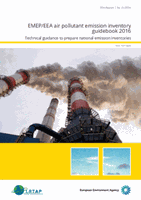
On October, 17, a new 2019 Updated Air Pollutant Emission Inventory Guidebook version is published by EEA and EMEP. The joint EMEP/EEA air pollutant emission inventory guidebook supports the reporting of emissions data under the UNECE Convention on Long-range Transboundary Air Pollution (CLRTAP) and the EU National Emission Ceilings Directive. It provides expert guidance on how to compile an atmospheric emissions inventory. The Guidebook is published by the EEA with the CLRTAP Task Force on Emission Inventories and Projections (TFEIP) responsible for the technical content of the chapters. Our Technical Director as co-leader of TFEIP Combustion and industry expert panel is the coordinator of several chapters of the Guidebook.
Impacts of traffic to and from shopping centers
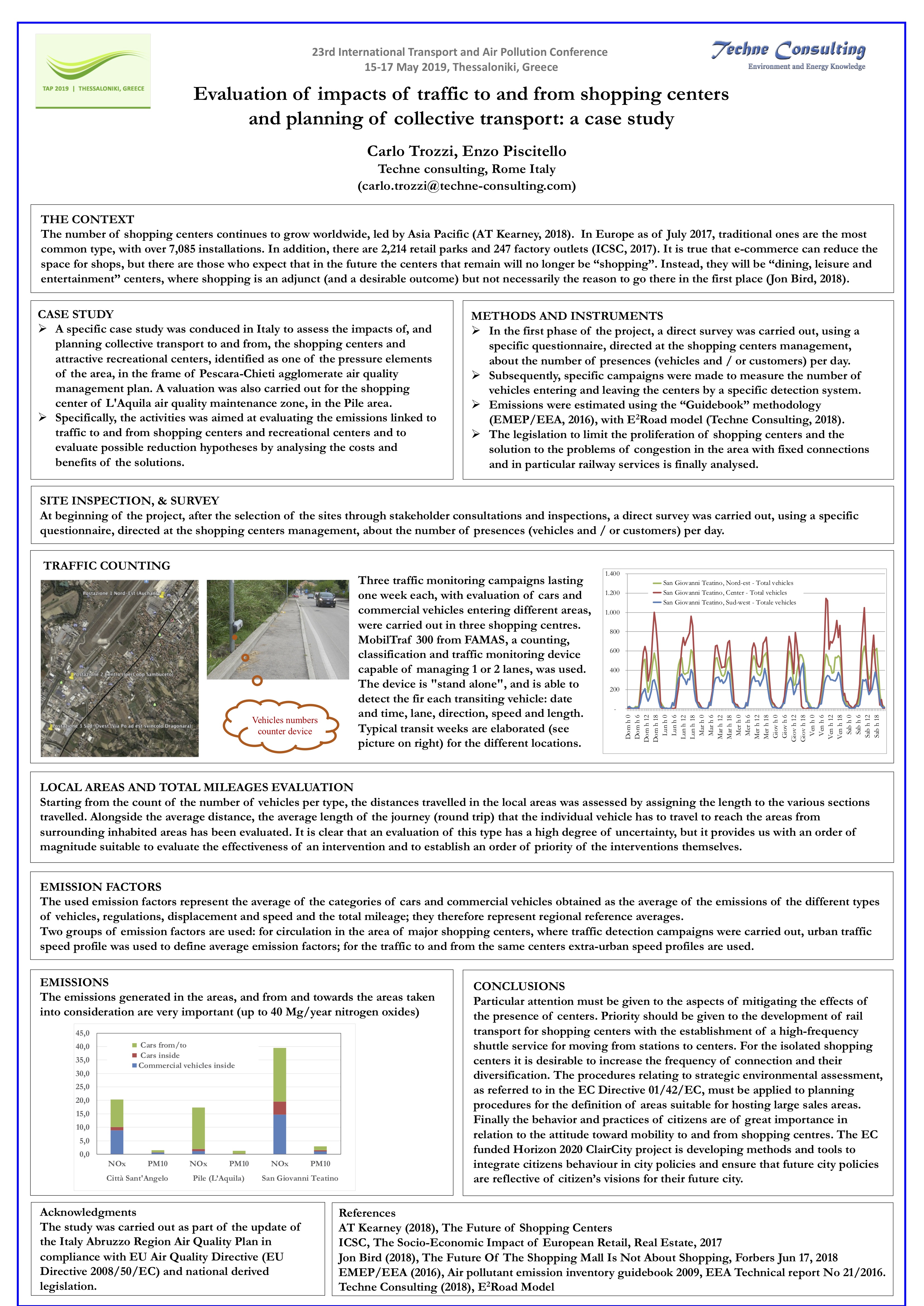 At the 23rd International Transport and Air Pollution Conference on May 15-17, 2019 in Thessaloniki a poster was presented that reports the results of the case study on the assessment of traffic impacts to and from shopping centers and on collective transport planning, carried out in the course of activities to support the preparation of the Regione Abruzzo Air quality management plan.
At the 23rd International Transport and Air Pollution Conference on May 15-17, 2019 in Thessaloniki a poster was presented that reports the results of the case study on the assessment of traffic impacts to and from shopping centers and on collective transport planning, carried out in the course of activities to support the preparation of the Regione Abruzzo Air quality management plan.
The conclusion of the work is that particular attention must be given to the aspects of mitigating the effects of the presence of centers. Priority should be given to the development of transport, especially rail, for shopping centers. The procedures relating to strategic environmental assessment must be applied to planning procedures for areas suitable for hosting large sales areas.
CLAiR-City in international conferences
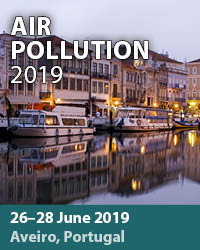
In the frame of the European project Clair-City (Citizen Led Air pollution Reduction in Cities), funded by the European Commission in Horizon 2020 and led by a consortium of universities, research centers, public and international institutions and companies (including Techne Consulting) some results on the evaluation of the impact of current and future scenarios have recently been presented in two international conferences.
In particular, at the 19th International Conference on Harmonisation within Atmospheric Dispersion Modelling for Regulatory Purposes held in Bruges in June the Impact Assessment on Air Quality the City of Bristol was presented while in the Air Pollution 2019 Conference 2019 in Aveiro a work was presented on the evaluation of the contributions of the different emissions sources on air quality in the city of Bristol.
Air Pollution and Sustainable Development and planning conferences
The first results of the work of Techne Consulting in the ClairCity project were presented during the summer in two international conferences: Air Pollution 2018 in Naples and Sustainable Development and Planning 2018 in Siena. Both works were presented by our technical director and make a preliminary assessment of the activities carried out in the project.
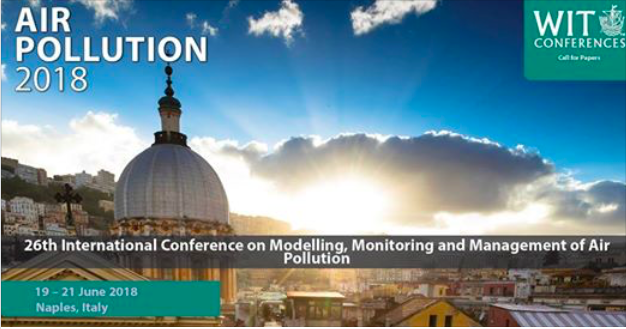
In the conference Air Pollution 2018 a paper was presented entitled Air Pollutants Emissions and Carbon Footprint at City Level: the Claircity Project; in the paper the focus is on the activities of defining a methodology for assessing the emissions of air pollutants and Carbon Footprint and on the first results on the sample cities of Bristol and Amsterdam; in the paper the focus is on the dissemination activities of the project activities, and in particular on social networks strategies, with reference to the Liguria Region
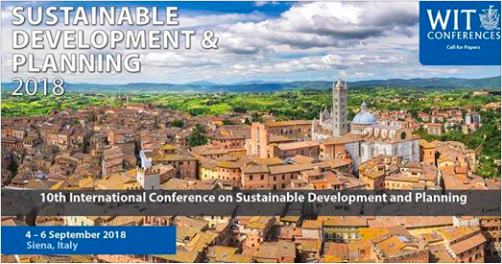 In the conference Sustainable Development and Planning 2018 a paper was presented entitled Social Networks, Awareness And Behavioral Modification to Reduce Air Pollution and Carbon Footprint: The Claircity Project in Liguria Region.
In the conference Sustainable Development and Planning 2018 a paper was presented entitled Social Networks, Awareness And Behavioral Modification to Reduce Air Pollution and Carbon Footprint: The Claircity Project in Liguria Region.
JRC Workshop/Working group “Challenges of clean and efficient transport in the Alpine and Adriatic-Ionian regions”
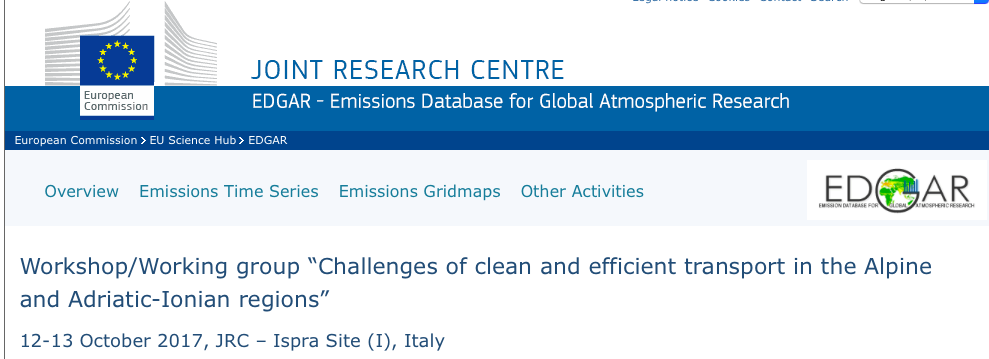 A Workshop/Working group on “Challenges of clean and efficient transport in the Alpine and Adriatic-Ionian regions” was held from the 12th to the 13th of October 2017 in Ispra, Italy. The meeting was organised by Joint Research centre of the European Commission. The event was aiming at enhancing expertise/knowledge sharing, which is an essential element to address cross-macroregion issues, between policy makers and scientists from these two macro-regions. The activity is organized in the framework of JRC scientific support to the implementation of European Union Strategy for Adriatic and Ionian Region (EUSAIR) and the European Union for Alpine Region (EUSALP), “Macro-regions and regions of the future: mainstreaming sustainable regional and neighbourhood policy” (MARREF) project. Our Technical director Carlo Trozzi made a presentation on SESSION 2 Reduction of emissions from ship transport about Emissions estimates in port and control measures: methodology, case studies for Alpine and Adriatic-Ionian regions, EU and international comparison and a presentation on SESSION 3 Reduction of emissions from road transport about "Preparatory study for Air Quality plan in Abruzzo region/Pescara-Chieti costal area: emissions from transport sector and their impact on air quality.".
A Workshop/Working group on “Challenges of clean and efficient transport in the Alpine and Adriatic-Ionian regions” was held from the 12th to the 13th of October 2017 in Ispra, Italy. The meeting was organised by Joint Research centre of the European Commission. The event was aiming at enhancing expertise/knowledge sharing, which is an essential element to address cross-macroregion issues, between policy makers and scientists from these two macro-regions. The activity is organized in the framework of JRC scientific support to the implementation of European Union Strategy for Adriatic and Ionian Region (EUSAIR) and the European Union for Alpine Region (EUSALP), “Macro-regions and regions of the future: mainstreaming sustainable regional and neighbourhood policy” (MARREF) project. Our Technical director Carlo Trozzi made a presentation on SESSION 2 Reduction of emissions from ship transport about Emissions estimates in port and control measures: methodology, case studies for Alpine and Adriatic-Ionian regions, EU and international comparison and a presentation on SESSION 3 Reduction of emissions from road transport about "Preparatory study for Air Quality plan in Abruzzo region/Pescara-Chieti costal area: emissions from transport sector and their impact on air quality.".




